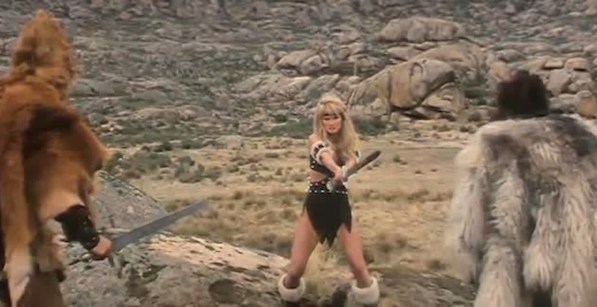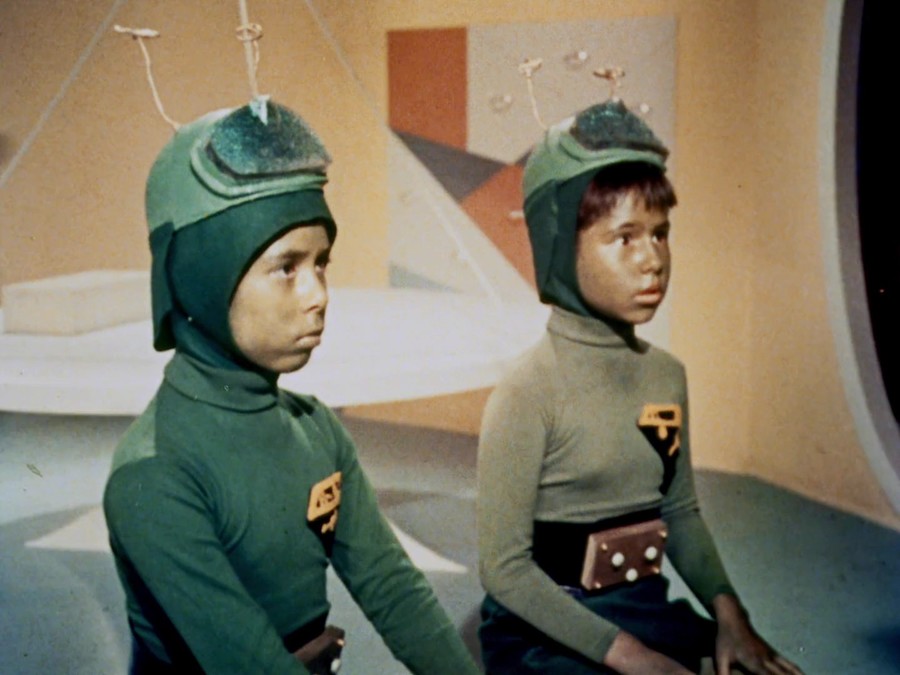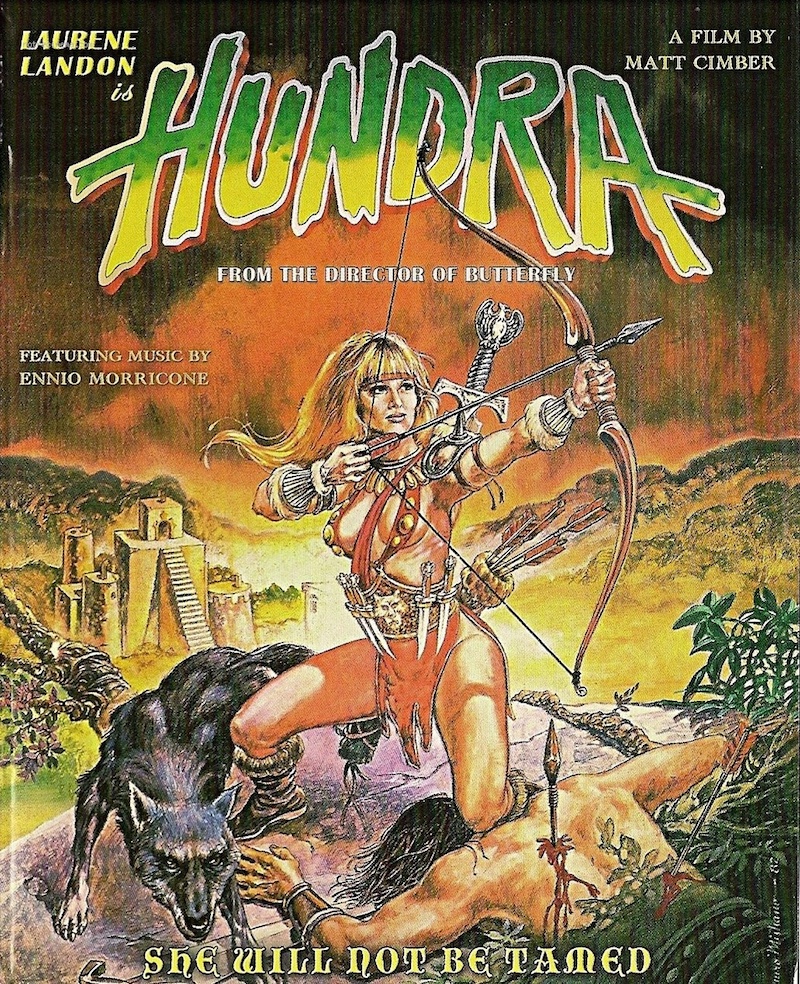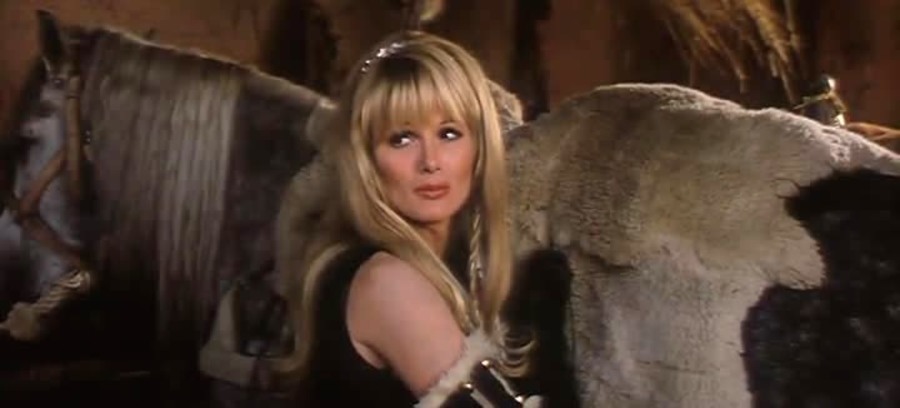Some filmmaking careers are so consistent in their personal style or clock-punching professionalism that no further explanation is needed; the work speaks for itself. Then there are people like Matt Cimber, whose fabulously colorful and eccentric credits are likely to make you exclaim “WHAT?!?” and pray there’s a tell-all autobiography in his future.
What could possibly connect the dots between early seventies softcore sexploitation, mid-seventies blaxploitation and late-seventies giallo horror? Between cult B-flick hellcats Laurene Landon, Mamie Van Doren and Dyanne Thorne (Ilsa: She Wolf of the SS) and the lofty laureled likes of Orson Welles and Rex Harrison? Who else could claim he helped propel histrionic singing divas Pia Zadora and Lola Falana toward movie stardom…even if those efforts failed? Or that he repeatedly directed talents as wildly diverse as Millie Perkins (The Diary of Anne Frank), Hollywood’s favorite “drunk homeless dude” portraitist George “Buck” Flower, or the Gorgeous Ladies of Wrestling (aka G.L.O.W.)?
There’s only one answer: This guy.
Did we mention he was also married to Jayne Mansfield? You know, the bodacious 1950s blonde bombshell who made Marilyn Monroe look demure?
Like we said, an autobiographical tome would be hugely appreciated, and not just because Cimber’s path has crossed with so many famous (and infamous) people. He’s still active on the brink of eighty as a producer, director and writer. Check out this recent teaser for a proposed project:
But the Italian American multihyphenate, born Thomas Vitale Ottaviano in 1936, gets the most attention these days for his roughly two-decade career in variably high- and low-end U.S. exploitation movies. It was not a career he initially seemed destined for: Trained at NYC’s famed “Method” factory, The Actors Studio, he started out working in legitimate theater, including a long-running off-Broadway adaptation of F. Scott Fitzgerald stories. A failed Broadway revival of Bus Stop threw him onto the path of Mansfield, that peroxided near-sensation whose career never quite escaped the shadow of Bus Stop’s big-screen star Monroe.
His first film feature capped their meeting and marriage, even if they’d already divorced (and Jayne died in a tragic car wreck) before its release. Prefaced by aging journalist legend Walter Winchell condescendingly informing us that the film we’re about to witness confirms sex symbol Mansfield “could act,” Single Room Furnished is a heavy-handed stage adaptation in which she unconvincingly portrays a series of “ordinary” women in ridiculous wigs seduced from naive adolescence (Mansfield was thirty-four at the time) to doomed, disillusioned prostitution.
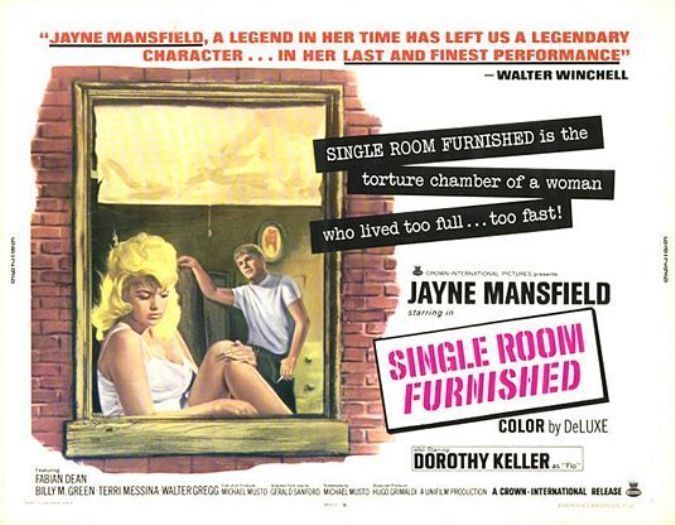
Hopelessly dated upon arrival, it was not the kind of movie anyone wanted to see by the time it was finally released after her mid-1967 death.
Nonetheless, Cimber had apparently realized his attraction to several things that would subsequently define his career: Directing movies about sexy topics, with sexy women. Starting in 1969, he’d have a brief, busy run of making sexploitation features in the era immediately pre-porn. These films are not easy to find now, but their titles alone encapsulate the “curious,” prurient tenor of the era: Man & Wife: An Educational Film for Married Adults (1969), He & She, Africanus Sexualis aka Black is Beautiful, The Sexually Liberated Female (all 1970), Sex and Astrology and Love is Catching (both 1971).
Having prepared audiences for the onset of hardcore cinema (which would arrive the next year with hugely popular Deep Throat), Cimber chose not to go XXX himself. Instead, he resurfaced in 1973 with what would prove a healthy run chasing the trailing comet of peak-era blaxploitation cinema. All his efforts in that genre would prove cheap, cheesy, lurid and vigorous. There’s nary a dull film in the bunch.
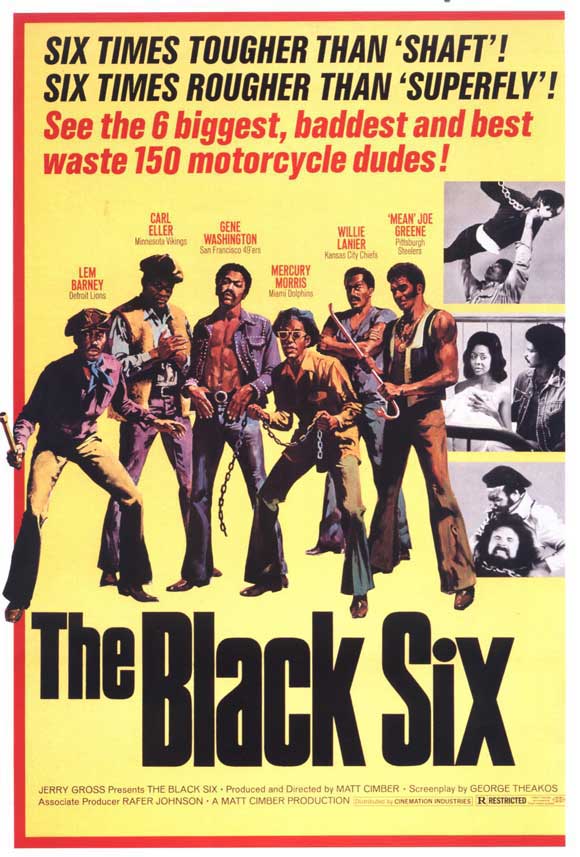
The Black Six (1973) starred a half-dozen African American NFL players as tough bikers avenging the racist murder of one’s brother. Even better was 1975’s The Candy Tangerine Man, purportedly Samuel L. Jackson’s favorite vintage blaxploitation. In it, hulking John Daniels (Black Shampoo) plays a respectable middle-class L.A. businessman who happens to moonlight as a Rolls Royce-driving pimp. After he’s knocked off a few rival “macks” and several corrupt cops, this Candyman’s double life starts to unravel.
The same year Cimber crafted his blaxploitation swan song in Lady Cocoa, with “First Lady of Las Vegas” Falana in a non-singing role as a tough jailbird temporarily freed to testify against her gangster ex-boyfriend…if his hitmen don’t get to her first. Here’s Falana a few years prior, in her more lasting role as “all-around entertainer,” offering highly realistic portraiture of working in a coal mine:
The popularity of vintage blaxploitation movies has kept this trio in circulation. Good luck finding some of his other mid-seventies titles, however, like fact-inspired crime drama Alias Big Cherry, land-of-broken-dreams Hollywood drama Gemini Affair or the apparently unreleased That Girl from Boston. All were from 1975, a year in which Cimber made a breakneck five features. In 1976 he made just one, but nearly four decades later it is considered by many his personal best, as well as one American psychological horror closest in style and content to the Italian “giallo” thrillers of the same period.
The Witch Who Came from the Sea starred Millie Perkins in a role that was a very, very long way from the one she’d been “discovered” for in 1959, as diarist turned concentration camp victim Anne Frank. Here, the no-longer-youthful actress plays Molly, a waitress in a dive bar who’s considered odd but harmless by coworkers and family. What they don’t realize is that she periodically flies into insane rages that often leave a man or two dead; this is Molly’s way of working out the deep damage inflicted by childhood sexual abuse. Trailer on YouTube:
Witch is by turns bleak and alarming, its seedy atmosphere and dislocative techniques amplifying an off-putting heroine’s increasingly slippery relationship with reality. It attracted relatively little attention upon initial release, but since first being released to DVD uncut a decade ago, this striking portrait of a madwoman has gained status as a minor genre classic.
Strangely, this most acclaimed (at least in retrospect) of Cimber’s films immediately preceded a six-year layoff from features. When he returned, however, it was with the kind of budgetary and casting resources that had previously been well beyond his reach. Based on a book by great hardboiled novelist James M. Cain (The Postman Always Rings Twice, Mildred Pierce) its lurid tale of small-town sex and murder was intended to launch newcomer Pia Zadora as a big new star. The petite Hoboken native’s only prior screen role had been as one of the green-skinned kiddies in 1964 cult classic Santa Claus Conquers the Martians.
But now she was all grown up, and out (as Bob Mackie’s costumes wasted little material demonstrating), and her much older financier husband Meshulam Riklis would spare no expense trying to convince the whole world of her charms. Here she is, introducing herself to Stacy Keach as her, um, daddy:
Surrounded by a cast of Hollywood veterans including The Tonight Show’s Ed McMahon, Lassie’s June Lockhart and Orson Welles himself in one of his last significant roles, Butterfly sold Zadora so hard it induced widespread buyers’ remorse. The film was widely ridiculed, its star especially so. Her “Best Female Newcomer” Golden Globe didn’t help since many speculated that Riklis himself had unscrupulously convinced the Hollywood Foreign Press Association into handing her the award. (No such payout was required to attract the movie’s many Golden Raspberry honors for “the year’s worsts.”) Incredibly, the power couple named their first child Kady, after her lying, greedy, incestuous sexpot character here.
Despite all the gloating bad press and underwhelming box-office, however, Butterfly remains a guilty-pleasure delight in the mode of Red Shoe Diaries softcore specialist Zalman King’s work. It benefits greatly from the best collaborators money could buy, including some fine actors (Keach, Edward Albert), Dutch cinematographer Eduard van der Enden (Daughters of Darkness, Tati’s Traffic) and famed composer Ennio Morricone. Courtroom scenes are reliably the death of many a movie, but Butterfly’s’s outrageous, climactic revelations (presided over by Judge Welles) are actually its camp highlight.
Riklis and Zadora weren’t giving up yet, and they must have thought Cimber had served them well. Ergo Cimber also got to direct the Best/Worst Female Newcomer in her second vehicle, perhaps no surprise since its plot bore a strong resemblance to that of Lady Cocoa. Asked a couple years later why neither crime saga Fake-Out or New Wave sci-fi musical Voyage of the Rock Aliens (not directed by Cimber) were thus far unreleased, Zadora purportedly joked “I threatened to commit suicide if Fake-Out was released.” Still, it’s hard not to be intrigued by any movie that teams La Zadora with Telly “Kojack” Savalas , Desi Arnaz Jr., sitcom perennial Larry Storch, plus Riklis and Cimber themselves in cameo roles.
Cimber moved from Zadora Country to another, lesser-remembered Planet of the Movie Star Who Wasn’t. Hundra (1983) and Yellow Hair and the Fortress of Gold (1984) both starred Laurene Landon, a blonde, buxom, athletic Canadian beauty who seemed the perfect cut-rate female Conan the Barbarian and Indiana Jones in B-grade knockoffs of those successful mainstream franchises. Hundra has her as the ad copy’s titular “Woman of Beauty. Warrior of Strength. Hunter of Man,”, an Amazonian archer just waiting for the right bigger-spear-carrying man to “tame” her.
Hundra remains among the best, mostly piss-poor “Conan” imitations of the eighties—right up there with the same year’s hilariously sexy/sexist Deathstalker starring erstwhile leading Playboy Playmate Barbi Benton. Presumably its financiers thought Landon and Cimber a smart enough combination to immediately re-create the magic with Yellow Hair and the Fortress of Gold. That fantasy-tinged period western action adventure was to Indiana Jones and the Temple of Doom as Ghoulies was to Gremlins.
Cimber has been less involved in features in the last three decades, although according to his website he’s remained highly active in various media. He was notably busy as creator of the hit syndicated series Gorgeous Ladies of Wrestling, producer of myriad TV documentaries and most recently director/co-scenarist for Miriam. The latter fact-inspired tale of Nazi war crimes returned to the terrain of A Time to Die, a Nazi war-crimes revenge drama with My Fair Lady’s Rex Harrison, The Birds’ Rod Taylor and veteran English-speaking Italian Raf Vallone that was shot in 1979 but unreleased till after Butterfly.
Much less starry, and little-seen despite winning Telly Sevalas’ daughter Ariana good reviews in the title role, Miriam nonetheless proved the apparently indefatigable Matt Cimber has still got game. He may survive, and/or surprise, us all yet. Here’s more from Femme D’Action:

